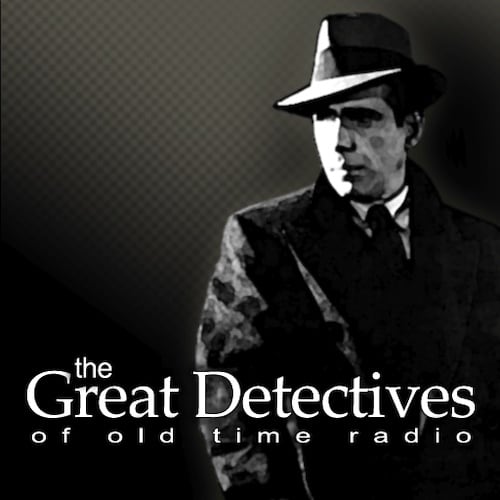Radio’s big comedy shows often went on Summer break. In World War II, this was especially true as many comedians used their time off the air to continue working with USO and entertaining the Troops. In 1942, the hit Fibber McGee and Molly show went on Summer Vacation, but their sponsors, Johnson’s Wax, decided to continue to sponsor the Johnson’s Wax Program.
Johnson’s Wax could have chosen to do a typical summer musical program, with a nice singer and nice songs. Some of these series circulate. They’re pleasant if you like that sort of thing, but utterly forgettable and indistinguishable from each other. The Johnson’s Wax Program of the Summer of 1942 was different. Yes, it featured two talented singers in Connie Haines and Bob Carroll. It also featured two great and unique radio talents: Composer, arranger, and bandleader Meredith Willson and storyteller John Nesbitt.
Willson led the band for many variety shows and comedies that required him to play a role. Invariably it would be that of the dunce. However, that stage persona had little connection to his musical work. His music was filled with great arrangements and intriguing ideas for new compositions. He did great work on the Maxwell’s House Good News program in the late 1930s and early 1940s. However, I think his best work in the golden age of radio would be a few years later in The Big Show, a 90-minute radio program that aired from 1950-52.
John Nesbitt was a storyteller. His series of radio programs and MGM movie shorts called The Passing Parade told true stories almost too amazing to be believed. Yet, each fact was fully verified with the scripts being written by Nesbitt himself. The stories were not only surprising but often touch the hearts and minds of the listener with Nesbitt’s skillful reading. The best comparison I can think of for Baby Boomers is Paul Harvey’s Rest of the Story broadcasts, only a bit more dramatic.
Tother Willson and Nesbitt complimented each other’s work. Throughout the summer series, Willson played a series of “lost melodies.” These melodies had been meant for greatness but forgotten or laid aside for one reason or another. Nesbitt told the story of each lost song. Willson meanwhile scored Nesbitt’s stories, matching the stories with solid music (when required.)
The tone of the series, both in Nesbitt’s stories, as well as in its announcements reflected the Spirit of 1942. America was a Nation that was less than a year removed from Pearl Harbor, whose Atlantic merchant ships were under constant danger from U-Boats, and was moving to a firm war footing. Nesbitt turns his full rhetorical powers on the Axis Powers several times and it is stirring, particularly his “letter” to Adolf Hitler.
The series ran for thirteen weeks. Twelve episodes are in circulation. The only bad thing about the series is that the circulating episodes, while clear, are not the highest quality. Still, if you’re wanting great music, great story, and some solid singing, this is a series that’s well worth checking out.
Rating: 4.5 out of 5
The twelve existing episodes of the Johnson’s Wax program are available for free online here.
This post contains affiliate links, which means that items purchased from these links may result in a commission being paid to the author of this post at no extra cost to the purchase
